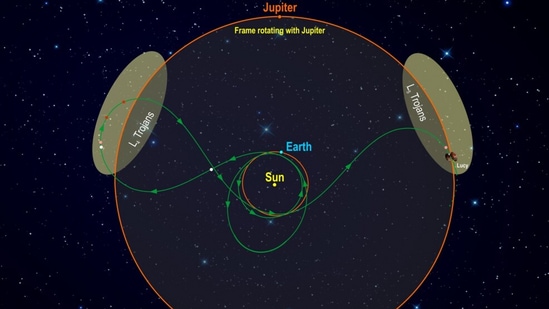What is NASA’s Lucy spacecraft that will pass by Earth on Oct 16 | 5 points
NASA said this slingshotting wil help Lucy gain part of the orbital energy it needs to travel to the unexplored population of asteroids.
National Aeronautics and Space Administration’s (NASA) Lucy spacecraft- launched to explore Trojan asteroids of planet Jupiter - will pass by Earth at an exceptionally close distance at just 350 km above the surface on October 16, the agency tweeted on Friday.

NASA said this slingshotting will help Lucy gain part of the orbital energy it needs to travel to the unexplored population of asteroids. The spacecraft’s trajectory will bring it lower than the International Space Station - making its way through earth-orbiting satellites and debris.
5 points about the mission
Lucy was launched in October last year on a 12-year voyage - set to explore eight asteroids - a main belt and seven Trojans, trapped in orbits around the Sun at the same distance as Jupiter, either ahead or behind, stabilised by their gravitational balancing act.
Scientists believe that these asteroids could be remnants of the primordial material that formed the outer planets - crucial to decipher the history of solar systems.
Read more | NASA says spaceship successfully deflected asteroid in test to save Earth
Earth’s gravity assist will help the spacecraft to set on a new trajectory. It will return to Earth for more similar gravity assists so it can cross the main asteroid belt to finally reach Trojan asteroid swarm, NASA has explained.
Lucy’s trajectory will help it capture images of the nearly full Earth and Moon. Scientists have also prepared an action plan where they’ll alter the time of its closest approach in case Lucy comes at a risk of colliding with any of Earth’s satellites or debris.
The spacecraft will be first seen by observers in Western Australia - visible to the naked eyes for a few minutes before disappearing. It will then pass through the Moon - taking its images - an important step to understand the collisional history of the Trojan asteroids.






